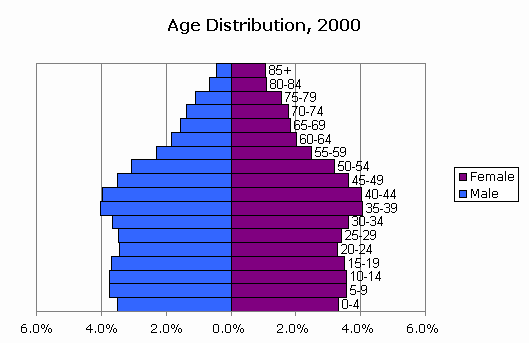
Sex distribution
The sex distribution refers to the classification of a given population according to sex or gender (male or female). Sex distribution can easily be obtained from a population census of a given country which shows the total number of males and the total number of females.
A knowledge of the total number of makes and females in a country will assist the government to make the necessary plans to cater for the population. If, for example, the population of the female is higher than that of the males, it means government will have to plan to provide goods and services for more people because such a country will give rise to high population. Nature has, however tried to balance the number of males with that of the female in such a way that the differences in number between the two is usually very small.
Occupational distributions
Occupational distribution of a population refers to the classification of the working population into different types of work they engage in. The occupational distribution in any population is influenced by a number of factors. These include:
1. The level of education
2. Availability of natural resources
3. The level of technology
4. The types of productive activities.
The major types of productive activities are primary (extractive), manufacturing, construction, commercial, direct and indirect services. In west Africa for instance, majority of the occupationally distributed population are found in farming, mining fishing and lumbering.
Geographical distribution
Geographical distribution of a given population refers to the spread of people into separate geographical areas within a country. The distribution may be due to occupational, presence of mineral resources, historical factors, seat of government, availability of social amenities etc. Reasons for high population density due to geographical distribution are: favorable climate, fertile soil, natural attachment/historical factors, administrative headquarters, employment opportunities, presence of minerals, presence of industries, presence of social amenities and infrastructure, commercial activities and migration.
Economic Implications or Effects of Increase in the Population of Dependants
The Dependants are the population that are between 0-17 years, which include the infants, pupils in nursery, primary, secondary and those in tertiary institutions, and the old age (over 60 years that are not working) but depend on the working population (18-60 years) to cater for all their needs or requirement. If the population of the dependents is higher than that of the working class it has the following economic implications: high taxation, increase in prices, increase in government expenditures, low savings, low investment, fall in standard of living, increase in demand for goods and services, increase in imports, decrease in exports and low supply of labor.
Proudly WWW.PONIREVO.COM
Source by Funom Makama



